Ramanuja-Melkote
Atthuzhai
Ramanuja’s family(followers) were growing everyday and Srirangam was more purified by their presence. His gurus Tirukoshtiyur Nambi, Tirumaalai Aandan , Tiruvarangaperumal araiyar attained paramapadaprapthi (shed their mortal coils) at the end of their journey on earth and Ramanuja did Srichoornaparipalanam (applying Tiruman to the departed) and other respects due to a srivaishnava acharya.
Mahapoorna (Periya Nambi ) his samashrayana acharya had a daughter by name Atthuzhai. She was scared to go to the river for her baths alone early in the morning and asked her mother-in-law to accompany her. Her mother-in-law tauntingly asked her to take along the servant maid sent by her father as part of her dowry. Stung by these words she went to her father’s home and tearfully reported the happenings to Mahapoorna (Periya nambi). Her father said he had no solution to offer and to consult her ‘Jeer’ (Ramanuja). On hearing her story Ramanuja asked Daasarathi (Mudaliaandan) to go as her servant. Daasarathi (Mudaliaandan) followed his guru’s order without flinching and helped out Atthuzhai at her in-laws house. But her in-laws were uncomfortable with a srivaishnava doing odd jobs at their house and requested Ramanuja to call him back to his Muth (monastery).
Yathiraja wears white clothes
At that point of time Chozha nadu (Thelower reaches of Kaveri and the delta region )was ruled by Parantaka Chola. He was a bigot who worshipped only Shiva and went about destroying Vaishnava temples and forced vidvans to sign a paper saying ‘Shivam paratharam naasthi’ which means there is no truth higher than Shiva. Many srivaishnavas signed the paper out of fear or for procuring rewards. His minister was Nalooran who was once a disciple of Kuresa (Kurathazhwan). He told the king that his mission would be achieved if he got the two greatest proponents of Srivaishnavism Sri Ramanujacharya and Kuresa (Kurathazhwan) of Srirangam to sign the paper.
One day when Sri Bashyakarar was engaged in giving SriBashyam lectures two emissaries from the Chola king came to Emperumaanar Muth to take along with them Ramanujacharya to the court of the Chola king. Nadadur azhwan and Kuresa (Koorathazhwan) ascertained the reason for their coming. While Nadurazhwan engaged the emissaries in conversation Kuresa (Koorathazhwan) picked up the saffron cloths of Ramanujacharya and wore them. He took along a Tridandam and accompanied the emissaries saying that he was Ramanuja. Mahapoorna(Periya nambi) accompanied him.
Emperumaanar was told about this by Nadadhur Aazhwan, Pilaan and Dasarathi (Mudaliaandan) who asked Emperumaanar to drape himself in white veshti worn by grihasthas and move out of the Muth immediately. Even as they were escaping the king’s men got news of this and followed the group. But they could not be caught.
Ramunaja in Nilgiris
The group procceded north of Srirangam towards the Nilgiris (Blue Mountains). The shishyas lost sight of Ramanuja and went searching for him. While searching thus they came across some tribals native to the region. They were shishyas (followers) of Nallan Chakravarthi. On seeing the srivaishnavas they came to know that they were coming from Srirangam. They prostrated before the srivaishnavas and enquired about the welfare of Ramanujacharya. The srivaishnavas told them about the harassment of the Chola king and how Ramanuja escaped from Srirangam. They also said with tear -filled eyes that they had come searching for him. Six days passed thus and the shishyas fasted but could not find Ramanuja. On the seventh day heavy rains fell on the hills and everyone shivered. The tribals lit fires with twigs to keep warm. The evening puja lamps were lit in their huts. Ramanuja along with his shishyas (followers) drenched from head to foot seeing the light came by enquiring the route to go further. The tribals made enquiries and found out that Ramanujacharya was at their doorstep. They immediately made a bonfire and brought forest honey and thinai (foxtail millet) for the travel weary, wet and hungry guru and his shishyas (followers). They brought with them new iron pots and a pounding mill to powder the grain and mix it with honey. The group slept through the night in the midst of caring shishyas (followers) of Nallan Chakravarthi who could not believe that the guru whose name they were chanting everyday was with them in person. Next day a member of the tribe was sent to Srirangam to ascertain the position there. Lakshminarayanaswami temple, Satyakalam Varadaraja Perumal temple and Madhyarangam temple all lie in and around Kollegal.
Kollegal Lakshmi Naryana temple
Satyakalam temple
Madhyarangam
Srirangapatna
Kongil Piratti
This drawing is from Kongilaachan tirumaaligai Srirangam
Emperumaanar and his shishyas (followers) left the place and proceeded further guided by the tribals who took them to the dwelling place of their chieftain. He had just returned home after a day’s hard work on the hills. He fell at the feet of the guests who had come to his house. He did not have the heart to eat with so many hungry souls around him. Knowing their restrictions in eating he took them to an agraharam (village occupied by brahmanas) called Kollegal to the house of a brahmana named Kattalai Vari along with abundant provisions. The brahmana’s wife was Kongil Piratti who welcomed the guests and asked them to eat. Ramanuja made enquiries about her acharya and dicovered that she was his shishya. Once when their region faced drought Kongil Piratti and her family had moved to Srirangam. She saw Ramanuja walk for alms from seven houses and had become his shishya. She had mantra-upadesham from him and had procured his padhukas. After knowing her antecedants they agreed to eat in her house. Ramanuja asked one of his shishyas to watch how she cooked. Kongil Piratti sprinkled water on her head with the words ‘Srimathe Ramanujaya namaha’ she cleaned the kitchen with fresh cow-dung, made kolams (rice flour designs) on the oven and wore ‘madi clothes’ (Freshly washed put to dry and untouched) set about cooking meticulously chanting verses from ‘Divya Prabhandham’ washing her hands several times. After transferring the cooked food on to fresh viands she took all the prepared items to the puja room and offered the food while saying ‘Ramanuja is my only solace’.
Having offered the food she invited her guests to partake of the prasadam. The srivaishnava who was deputed to watch the happenings reported every detail to Ramanujacharya and said he could not make out what two black things she worshipped was. Ramanujacharya asked Kongil Piratti to bring the two black things she worshipped. Kongil Piratti brought with her the ‘Padhukas’ (wooden sandals) she worshipped and related how she got them. Ramanuja asked her to repeat the mantras she had obtained and she did so. He wore the sandals and they fitted him perfectly. Kongil Piratti was perplexed for she had seen Ramanuja in saffron and here he was wearing the white veshti of a grihastha (householder). He explained the circumstances that led to this and asked her to serve prasadam to his shishyas. He however partook fruits offered to Perumal that night as he could not have the food offered to his own padhukas (sandals). Kongil Piratti fed her husband with the remaining prasadam but she took only fruits because her guru had eaten only fruits. The next morning Kattalai Vari sought mantra upadesam from Ramanuja and became his follower. The story goes that Kongil Piratti’s mother-in-law did not approve of her behaviour and went to throw away Ramanuja’s Padhukas but they appeared like a cobra to her and she spread word that Kongil Piratti was raising a cobra in her puja-room.
KollegalFalls
Sri Salagrama
After blessing Kongil Piratti Ramanujacharya and his followers went to Vahni Pushkarni and thereafter proceeded north-west to Mithilapuri The place was full of shaivas who did not welcome Ramanuja and showed animosity. Ramanuja called Dasarathi (Mudaliaandan) and had a talk with him and asked him to pour ‘sripadatheertham’ in the lake. Another version says that Ramanuja asked Dasarathi to wash his feet in the lake from which the locals fetched their drinking water. Miraculously the villagers animosity changed to friendliness and many sought Ramanuja’s upadesam and became his followers. Among them the most ardent follower was Andhra Poorna (Vaduga nambi). At the Narasimha temple in the village Andhra Poorna (Vaduga nambi) studied Vishistadvaitha at the feet of Ramanuja. It is chronicled that at this templeRamanuja prayed to Lord Srinivasa to put an end to the atrocities of Parantaka Chola the oppressor of srivaishnavas. It is reported that Parantaka Chola developed a carbuncle on his neck which got infested with worms. So much so he came to be called Krimikantha Chola. He reportedly died due to this after much suffering and pain.
Saligrama temple
Vaduga nambi
The water purified by Mudaliaandan
Ramanuja at Tondanur
From Saligrama Ramanuja and his followers proceeded east to Tondanur. Tondanur was ruled by Bitti Deva. Evil spirits possessed his daughter and no exorcist managed to cure her. The queen and the king were distressed. Tondanur nambi was a good man who lived by alms. One day when he came to the palace for alms he found the queen in grief and enquired the reason. On hearing about the condition of the princess he told the queen about the arrival of Ramanuja in Tondanur and how he had driven away a brahmarakshas who had entered the body of the princess of Kanchi. The king and the queen went to Ramanuja and invited him to the palace. Though Ramanuja did not generally visit the palace of kings, Tondanur nambi pleaded with him and said that our sampradhaya would benefit by this. So Ramanuja entered the palace where he was accorded welcome. His sripadatheertham (the water with which his feet were washed) was sent to the princesses chamber. It was sprinkled on her and she also partook of it. The princess became normal and the delighted parents became the shishyas of Ramanuja. Bitti Deva’s finger was cut by the Mughal attackers as a sign of victory over him. Ramanuja gave him the name Vishnuvardhana after he became his shishya.
Confrontation with Jainas
Bitti Deva was a Jain but was angry with the Jain monks who refused to eat at a feast hosted by him because he was fingerless. After Ramanuja cured his daughter he and his wife became Srivaishnavas. The Jainas were angered by this and 12,000 Jains came to debate with Ramanuja who was in the temple of Nrisimha. Ramanuja who had come escaping from one Krimikanta Chola was face to face with twelve thousand opponents. At this juncture Tondanur nambi reminded swami of his avathara rahasyam. Was he not the 1000 headed Sesa come down to earth? Ramanuja retired to an ante chamber in the temple and went behind the curtains. He assumed 1000 heads and argued individually with the Jain debaters who were won over. Many of them became Ramanuja’s shishyas (followers) and got samashrayanam (initiation).
Ramanuja at Tondanur Nrisimha temple
Yathiraja’s personal belongings
Ramanuja constructed a lake intercepting the water of the river Yadava flowing down from Melkote. The dimensions of this lake is recorded as 78 cubits high, 150 cubits thick and 250 cubits thick at the base. Ramanuja named the lake ‘Tirumalasagara’.
In later years it was called ‘Moti-talab’ and nowadays it is known as Tondanur lake. Bitti Deva now called Vishnuvardhana offered his guru the villages on either side of the river Kaveri in Srirangapatna . These were eight in number known as ‘astagramas’ which were headed by prabhus (lords) appointed by the king.
TondanurLake
Tondanur nambi
Tondanur nambi
As Emperumaanar continued to live here his stock of ‘Tiruman’ (white clay) used for donning the dwadasa pundrams (12 Tirumans) was depleting. He was worried as ‘Tiruman’ is a basic necessity for a srivaishnava. That night ‘Tirunarayana’ the reigning deity of Yadhugiri (Melkote) visualised in his dream. ‘Ramanuja! We are awaiting your arrival in Yadhugiri ‘said the Lord. In Melkote on the banks of ‘Kalyani’ pond there is a fountain called Veda pushkarni. This is the spot where Dattatreya had worn saffron clothes of a sanyasi. In the south west corner there is an ant-hill overgrown with Tulasi (sacred basil) between a champaka and a vakula tree. To the north west corner of the pond huge deposits of Tiruman have been deposited by Garudazhwar from ‘Swetha dweepam’.
Ramanuja told the king Vishnuvaradhana to accompany him to Melkote. On reaching the Kalyani pond Yathiraja changed to saffron clothes at ‘Veda Pushkarni. They followed the directions given by Tirunarayana in Ramanuja’s dream. On locating the chapaka and vakula trees everyone got excited. There was a huge ‘ant-hill covered with ‘Tulasi plants’. Ramanuja dug the earth and found the beautiful Moola vigraham of Tirunarayana. He was ecstatic. Vishnuvardhana and the big congregation of shishyas fortunate to be present at this historic moment danced in joy. Drums were beaten, tom-toms were sounded, trumpets were blown, devotees clapped their hands and burst into song. Milk in plentiful was brought to bathe the deity. Perumal was worshipped according to the prescribed rituals in Pancharatra agama. Ramanuja worshipped Tirunarayana for three days before installing Him in the temple. Ramanuja dedicated the Tiruvaymozhi pasuram’ orunayakanai’ to this Perumal.
Tirunarayana(moolavar) Melkote
Kalyani Pushkarni with the YogaNrisimha temple on the hill
Next Ramanuja went looking for Tiruman at the north west corner of Kalyani and did indeed find huge deposits of the sacred white clay. Ramanuja and his shishyas had enough supply of Tiruman to decorate their tirumeni(body) with dwadasa namas (12 Tirumans) and were highly pleased at the mercy of Narayana .
The jungle over Melkote hill was cleared and a temple was built for Tirunarayana. Rows of houses were built and utsavam (temple festival) schedules were drawn but how could utsavams be conducted without an Utsavar (movable deity)? So the search for the ‘Panchaloka’ divya mangala vigraham started.
Melkote temple
To be continued
Writeup & Photography : Smt Vyjayanthi Rajan


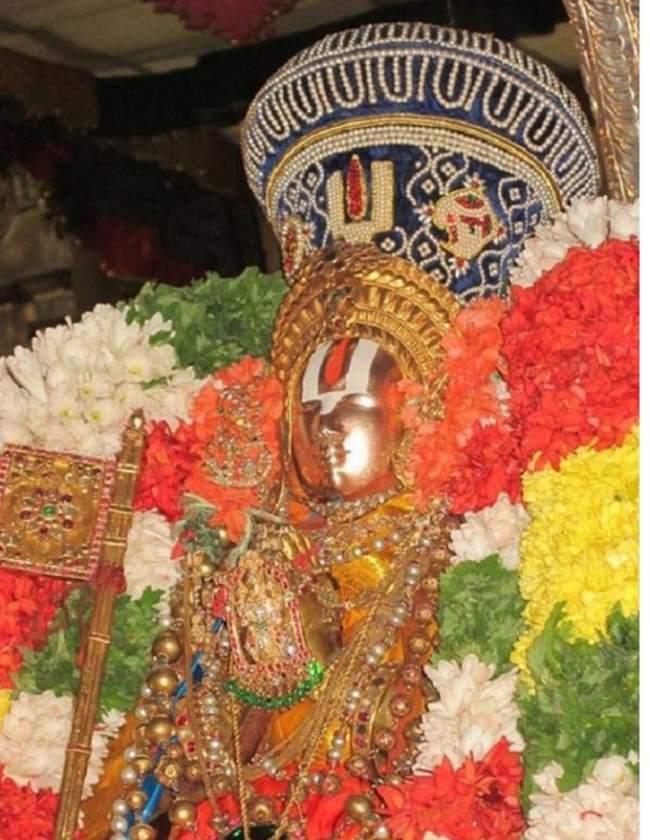

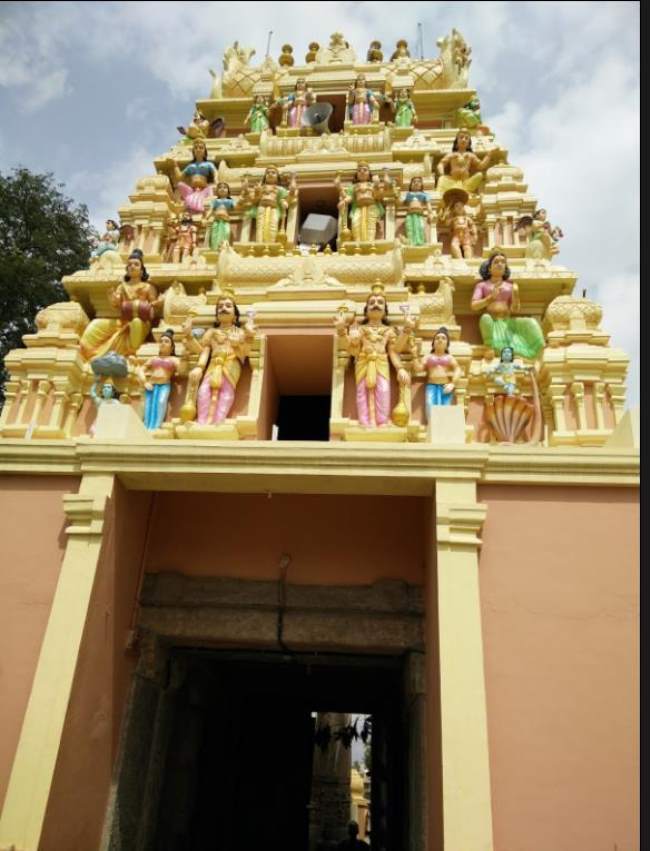



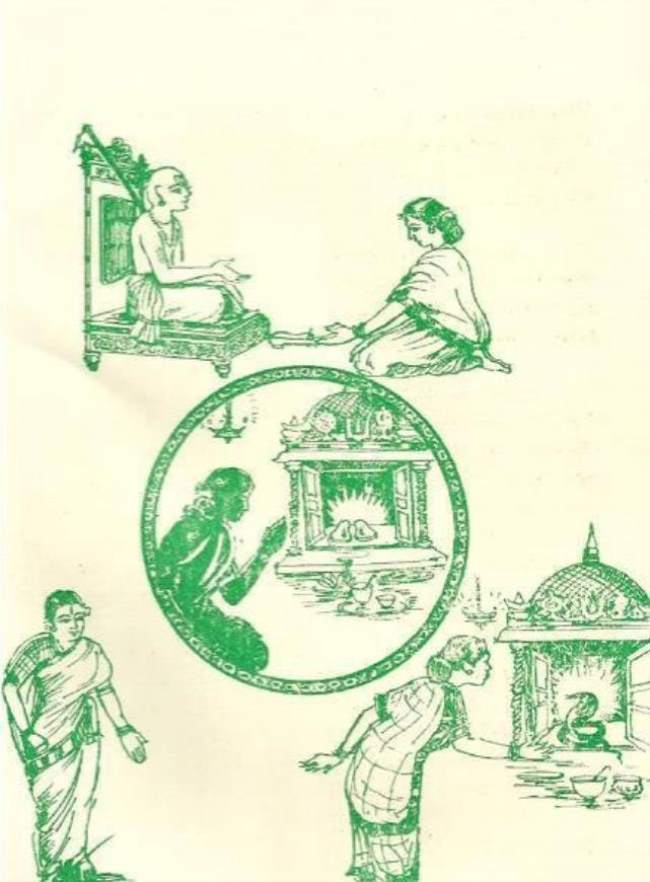
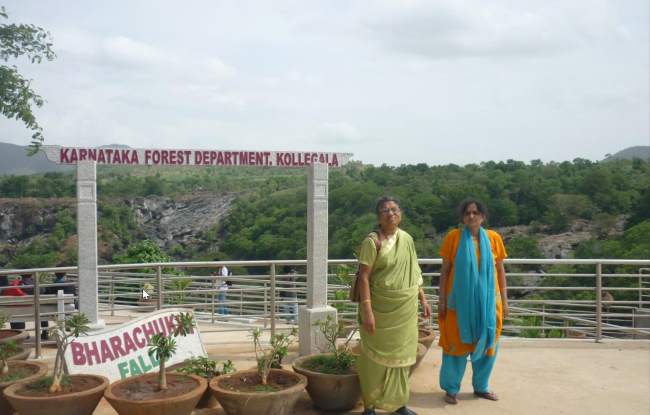

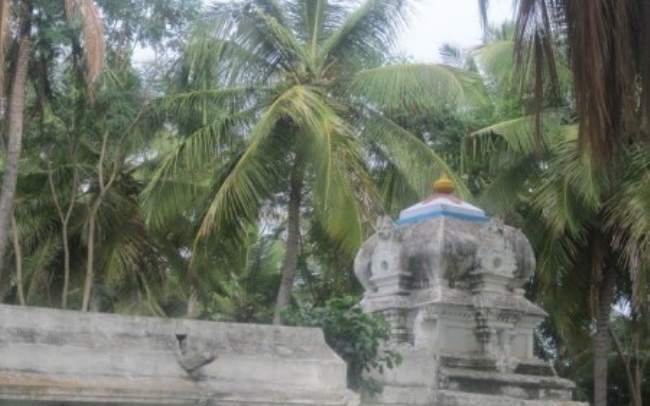

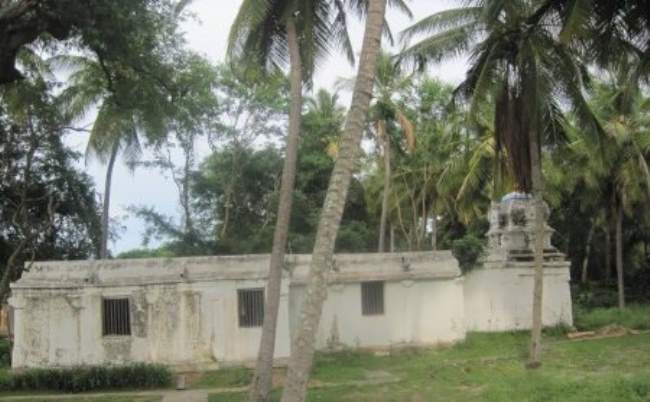


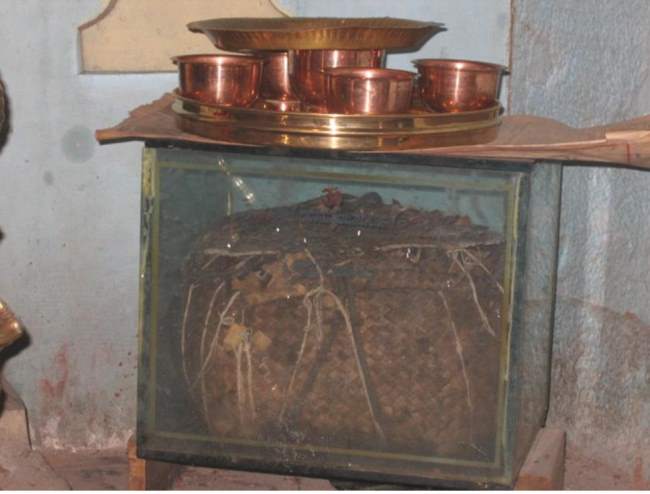

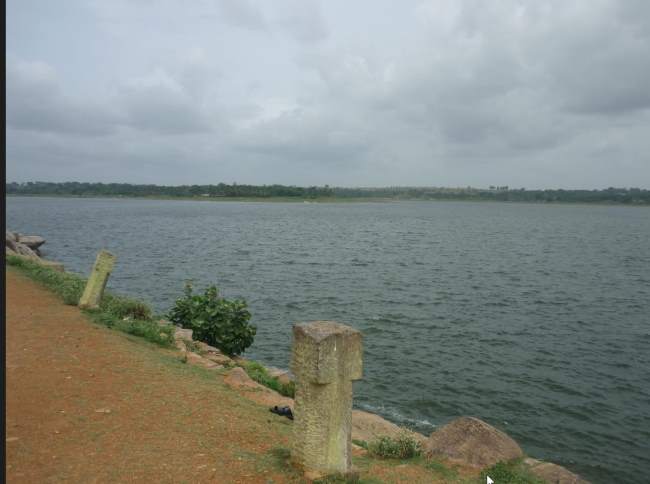



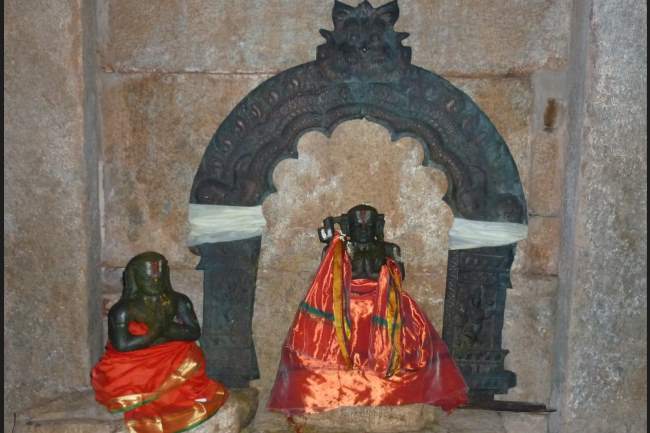
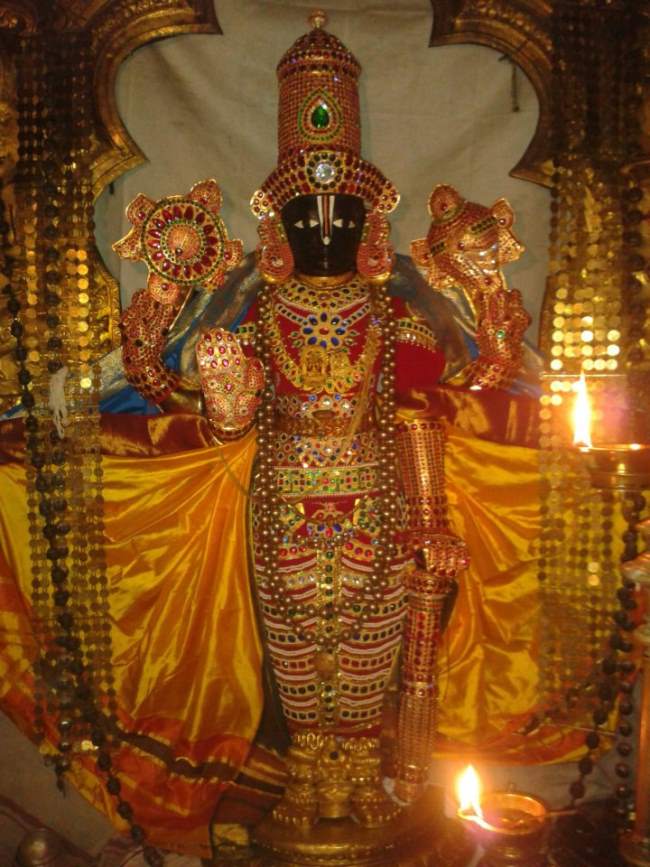
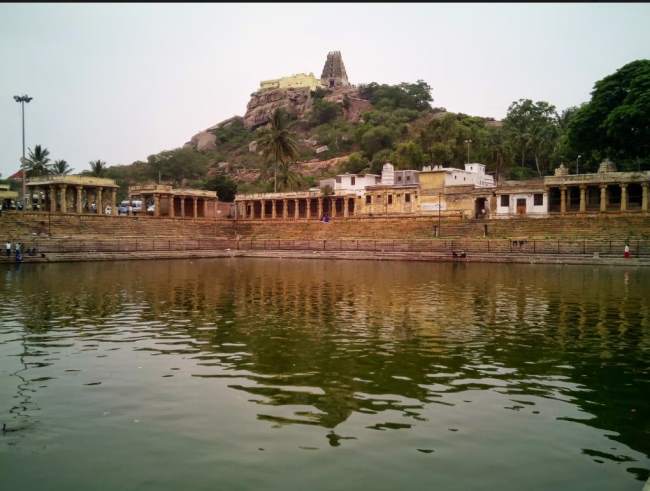







every devotee or mumukshu should invariably visit Melkote in his/her life and get Mangalasashanams of Emberumanar.